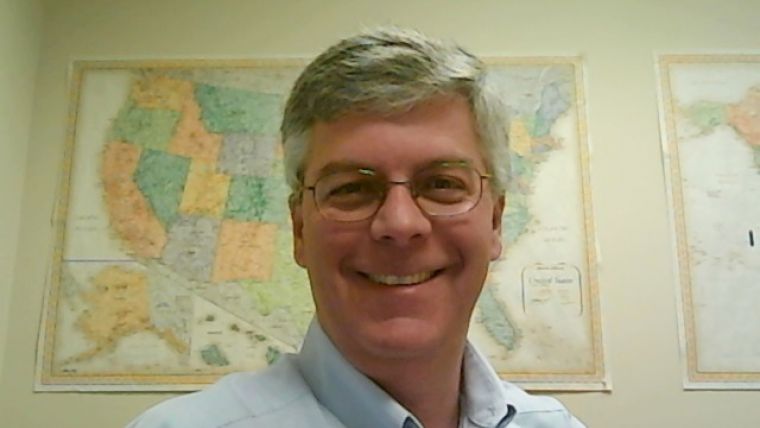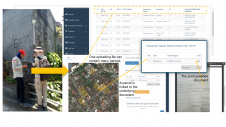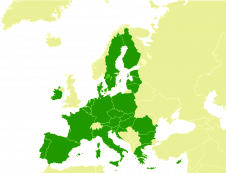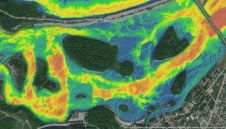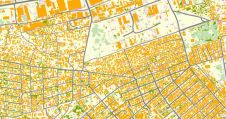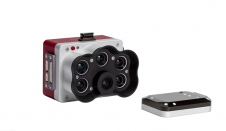It’s Time to Shift to GPS Accuracy and Reliability – Just Like the Scots
苏格兰议会于2018年7月通过的大岛屿法案的简短规定现在要求政府地图制造商将所属的驻地群岛放在那里。Tavish Scott是一位代表Shetland岛屿的政治家,因为他想要更诚实地在苏格兰的地图中争斗。在这一列中,John Florio在斯科特通缉上下文的同样的方式写下他的家时,今天使用的GNSS接收器也需要更多的上下文。他声称,制造商应该更清楚地了解其设备的数据的准确性和可靠性。
Tavish Scott wanted more honesty in maps of Scotland – and in July, he got it. A short provision in the larger Islands Act bill passed by the Scottish Parliament now requires government mapmakers to put the Shetland Islands where it belongs. Scott, a politician representing the Shetland Islands, had fought for the provision.
Cartographers often pulled the vast and solitary archipelago toward the mainland by putting its islands in a box, erasing the vast swath of sea between the two. Scott said the sea is a feature of Scotland, not a bug. “It seems to me a bit strange not to have the sea as part of the geography of Scotland. It’s the reality of where we are,” he told CBC. “The logistics of getting to and from Shetland are all too often overlooked, and this has a serious impact on the economies of the islands,” Scott said when he announced the legislation. Scott wanted context for his home – and, in this case, the sea provided context. Scottish maps were accurate, but they did not reliably contextualise the Shetland Islands with the mainland.
以同样的方式,今天使用的GNSS接收器需要更多的上下文。制造商已经使用了亚米,小脚,甚至亚厘米来描述其GNSS接收器提供的准确性水平。虽然一些制造商的索赔是可疑的 - 但是一个索赔甚至在GNSS社区中引起了一个小哗然 - 大多数对准确性的声明是合法的。但是,像苏格兰地图一样,它们是可靠的,反复彼此旁边的测量?
它可以说大多数GNSS接收器的高级准确性已经到来。然而,接收器精度的可靠性是下一个边疆。三个不同制造商的三个接收器可以要求亚米米精度,尽管每个制造商使用不同的统计方法来制定索赔。一个人可能会使用循环误差可能(cep),计算数据只有50%的时间。另一个可以使用root均线(RMS),表示数据仅在约65%的工作中真正的子米。第三种制造商可以使用两倍的距离根均线(2DRMS),这是一个测量,该度量将数据指示为尺寸为95-98%的时间。这三个'子米的设备并不完全等同,但它似乎是它们。以同样的方式,三个不同的苏格兰地图可以盒装,移动和操纵驻地群岛。
接收器,只有在其承诺提供的half of an eight-hour job would likely disappoint its user. That is four hours of wasted resources – and potentially four more hours of work. For that reason, manufacturers should be clearer about the reliability of the data their devices deliver. In the meantime, consumers will have to step up to the plate and do these five important things before purchasing a GNSS receiver:
1) consumers should accurately define the job they are doing. This gives the sales representative a better picture of the solution the application requires, 2) the consumer should avoid购买产品的产品可享用其工作。否则,他们可能会最终获得更昂贵的产品,他们不需要,或者一个看似廉价的产品不提供所需结果,3)消费者应该询问制造商如何验证产品索赔,例如准确性,4)消费者应该问可靠的产品提供广告的准确性,5)消费者应要求客户参考,现场演示,测试设备或租赁,以验证产品满足其需求。
Luckily, like accuracy, improved reliability is on its way. Not too long ago, an affordable sub-metre receiver was a pie-in-the-sky dream. However, today that sky is populating with satellites. Surveyors who once meticulously plotted the exact time and location of their GPS activities to catch good data – a practice called mission planning – might jokingly resent the accessibility of today’s satellites. (The ‘war stories’ of 2 a.m. mountaintop observations are legendary.)
There are 27 GPS satellites, 24 GLONASS satellites and two more satellite constellations on their way with Galileo and BeiDou. Soon, GNSS professionals will turn on a receiver and simultaneously capture 30-50 satellites, deriving measurements from four distinct constellations that all overlap. It is time for manufacturers to stop drawing their own boxes. Until then, consumers should use these questions and manufacturers should provide honest answers to contextualise products. Because sometimes there are miles of sea, it seems, between a claim and reality – just ask Tavish Scott.
让你的收件箱更有趣。Add some geo.
Keep abreast of news, developments and technological advancement in the geomatics industry.
免费注册
